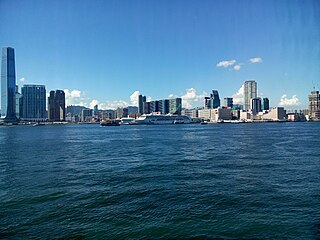
Kowloon is an urban area in Hong Kong comprising the Kowloon Peninsula and New Kowloon. It has a population of 2,019,533 and a population density of 43,033/km2 (111,450/sq mi) in 2006. It is one of the three areas of Hong Kong,along with Hong Kong Island and the New Territories. It is the smallest,second most populous and most densely populated of the divisions.

Yau Tsim Mong District is one of 18 districts of Hong Kong,located on the western part of Kowloon Peninsula. It is the core urban area of Kowloon. The district has the second highest population density of all districts,at 49,115 km2 (18,963 sq mi). The 2016 By-Census recorded the total population of Yau Tsim Mong District at 342,970.

Yau Ma Tei is an area in the Yau Tsim Mong District in the south of the Kowloon Peninsula in Hong Kong.

West Kowloon is the western part of Kowloon Peninsula in Hong Kong,situated within the Yau Tsim Mong District and Sham Shui Po District. It is bounded by Canton Road to the east,Victoria Harbour to the west and the south,and Jordan Road to the north. Further to the north,the area extends to Tai Kok Tsui to the west of the West Kowloon Highway. Nam Cheong,Olympic,Austin and Kowloon stations are within the area.

Nathan Road is the main thoroughfare in Kowloon,Hong Kong,aligned south–north from Tsim Sha Tsui to Sham Shui Po. It is lined with shops and restaurants and throngs with visitors,and was known in the post–World War II years as the Golden Mile,a name that is now rarely used. It starts on the southern part of Kowloon at its junction with Salisbury Road,a few metres north of Victoria Harbour,and ends at its intersection with Boundary Street in the north. Portions of the Kwun Tong and Tsuen Wan lines run underneath Nathan Road. The total length of Nathan Road is about 3.6 km (2.2 mi).

West Kowloon Corridor is part of Route 5 in Hong Kong. Bypassing existing surface roads in West Kowloon,it connects Lai Chi Kok Road in Cheung Sha Wan with the Gascoigne Road Flyover near Yau Ma Tei.
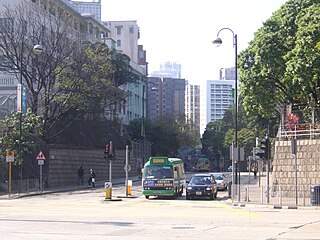
Austin Road is a road in-between Tsim Sha Tsui and Jordan,Kowloon,Hong Kong. It was named after John Gardiner Austin,Colonial Secretary of Hong Kong from 1868 to 1879. The northeast part of this street is noted for clubs,fields,and military buildings,while the western section is densely populated.

Middle Road is a street in the southern part of Tsim Sha Tsui,Kowloon,Hong Kong.
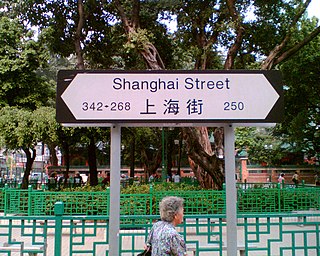
Shanghai Street is a 2.3 km long street in the Jordan,Yau Ma Tei and Mong Kok areas of Kowloon,Hong Kong. Completed in 1887 under the name of Station Street (差館街),it was once the most prosperous street in Kowloon. It originates from the south at Austin Road,and terminates in the north at Lai Chi Kok Road. Parallel to Shanghai Street are Nathan Road,Temple Street,Portland Street,Reclamation Street and Canton Road. Though parallel,Shanghai Street was marked by 2- to 3-floor Chinese-style buildings while Nathan Road was marked by Western-style buildings.
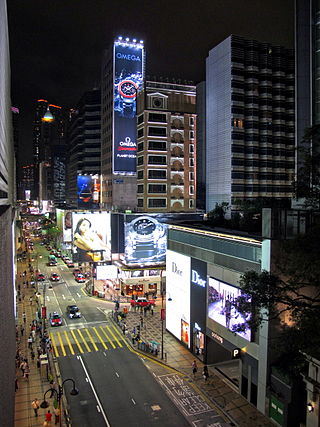
Canton Road is a major road in Hong Kong,linking the former west reclamation shore in Tsim Sha Tsui,Jordan,Yau Ma Tei,Mong Kok and Prince Edward on the Kowloon Peninsula. The road runs mostly parallel and west to Nathan Road. It starts from the junction with Salisbury Road in the south and ends in the north at the junction with Lai Chi Kok Road in the Prince Edward area. The southern section of Canton Road is home to many upscale retail shops,shopping centres and others business establishments,with busy traffic from both vehicles and pedestrians from morning till late at night.
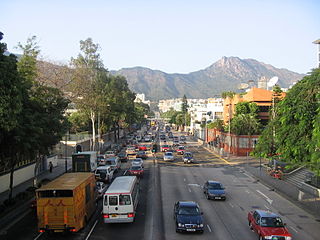
Waterloo Road is one of the principal north-south thoroughfares of Kowloon,Hong Kong. It stretches from Yau Ma Tei to Kowloon Tong.

Yau Ma Tei Theatre,once the largest theatre in Kowloon,is located at the junction of Waterloo Road and Reclamation Street,in Yau Ma Tei,Hong Kong. It is classified as "Grade II Historic Building" It is the only remaining pre-World War II theatre in Kowloon. It was recently converted into a venue for Cantonese opera. Another historical structure,Yau Ma Tei Fruit Market is adjacent to the theatre,across Reclamation Street.

Reclamation Street is a street stretching from Jordan to Mong Kok,Kowloon,Hong Kong. As its name suggests,it was built on the reclaimed western shore of the Kowloon Peninsula.

Public Square Street is a street in Yau Ma Tei,Kowloon,Hong Kong.

The Yau Ma Tei Fruit Market,officially Yau Ma Tei Wholesale Fruit Market,also simply known as the Fruit Market,is a wholesale fruit market in Yau Ma Tei,Kowloon,Hong Kong.
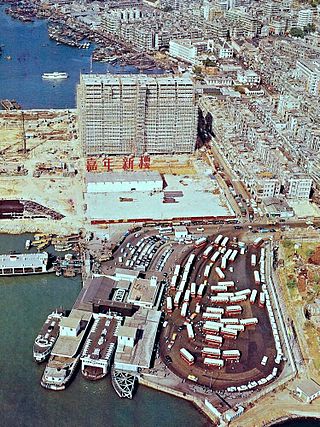
Jordan Road Ferry Pier or Ferry Point (1924–1998) is a demolished pier originally located at Jordan Road,Jordan,Hong Kong.
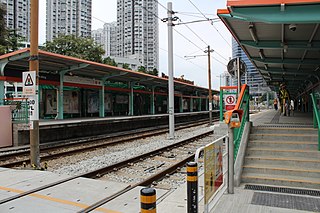
Tin Wing is an MTR Light Rail stop. It is located at ground level beside Tin Shing Road in Tin Shui Wai Town Centre,Yuen Long District. It began service on 26 March 1995 and belongs to Zone 4.
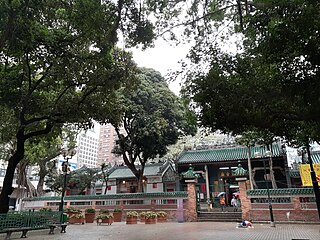
The Tin Hau Temple Complex is a temple in Yau Ma Tei,Kowloon,Hong Kong. It comprises a row of five adjacent buildings:a Tin Hau Temple,a Shing Wong Temple,a Kwun Yum temple,Shea Tan and Hsu Yuen. The nearby Temple Street is named after it.

Yau Ma Tei Car Park Building was a public multi-storey car park located at No. 250 Shanghai Street,Yau Ma Tei,Yau Tsim Mong District,Hong Kong. Built in 1970,the building is scheduled for demolition in 2021.

Pitt Street,named after William Pitt the Younger,prime minister of the United Kingdom,and before Acts of Union 1800,of Great Britain,is a street in one of the busiest sections in Yau Ma Tei of Hong Kong,hosting several prominent sites including Kwong Wah Hospital and the headquarters of Chinese YMCA of Hong Kong,spanning across three thoroughfares,namely Ferry Street in the west,Waterloo Road in the east and Nathan Road in the middle,which connecting north and south of Kowloon Peninsula. While said to be in Yau Ma Tei,it could be in Mong Kok or Mong Kok Tsui,depending on context. Its name in Chinese character is 碧街,which the character 碧/pik/,literally greenish jade,is a phonetic approximation of Pitt in Cantonese and 街a literal translation of street.
























